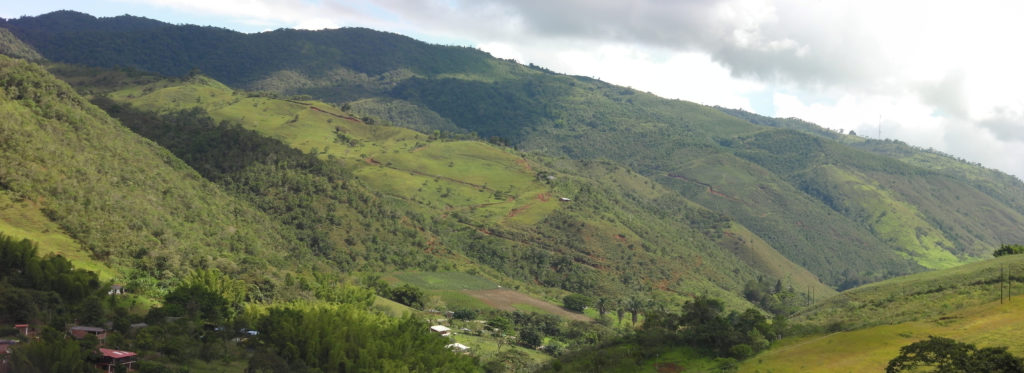In 2018, Australian agronomist Tony Rinaudo was awarded the alternative environmental Nobel Prize for innovation in the reforestation of the arid areas of the southern border of the Sahara. In his strategy, the slow, expensive and almost always frustrating planting of trees, was replaced by the protection of the regrowth of shrubs or seeds stored in the soils that germinated spontaneously with the help of native communities. In the Niger region, indigenous communities, successfully re-established more than 200 million trees.
Rinaudo, an employee of a religious foundation, redirects reforestation work when he finds very slow progress with conventional tree-growing schemes, replacing them with an easier path to follow: helping nature recover. He also takes advantage of the subhuman living conditions that follow the depletion of natural resources to activate changes in attitudes and generate new social behaviors and viable economies consistent with traditions. Rinaudo’s response to the current challenge of agriculture is intelligent and pragmatic: to investigate cultivation and production systems that reduce the impact of agriculture and livestock on climate change and biodiversity. This means breaking habits and mental schemes that had become unmodifiable truths, traditions; also the replacement of bureaucratized research systems by curious observation and user participation. A work scheme that can be extended to the production of nutritional and healthy foods without expanding the cultivated area at the expense of the jungles, without contaminating the soil and water and relying on the services provided by plants and living things for themselves. Hence, it is necessary to change the cultural valuations of plants classified as “weeds”.
In the Andean tropics things are not as difficult as in the semi-desert regions. We have more or less well distributed water, enough land with different climates and altitudes that allow different types of agriculture; large areas of forests that provide water and oxygen to our people, among other qualities that would allow us to declare ourselves privileged. But erroneous policies, accompanied by the petty interests of the “every man for himself” attitude, threw out thousands of people to unmaintained lands in order to establish self-consumption and grassland crops that were then sold to the profiteer. The cycle became repetitive and became more problematic with unsolvable illegal crops. Taking down jungle became the livelihood of many families. The richness of the tropics allowed this survival strategy to work despite the deterioration of the environment. But climate change, in the process of becoming a global crisis, a situation not known by our species, will begin to block survival strategies and individualistic solutions. New agreements, attitudes and behaviors must arise if you want to avoid the total, chaotic crisis that lies ahead, much more extensive, widespread and terrifying than any of the economic crises we have known. Unfortunately, we humans are used to react after catastrophic events. Learning from mistakes will not be a viable option for this great environmental crisis if we continue to act as we have been doing in the last century.
I want to show as an example what the agronomists of the Andean tropical zones can do, the “work” of environmental recovery carried out by the shrub called in the region of Dagua (Colombia) “Chilca”, a kind of Baccharis that the breeders of cattle disparagingly qualify as weeds. If it can do it without anyone’s help, how about we give it a hand! Let’s see:
- Potentially grows between 1200 meters above sea level (?) And 1900 (?), In arid or humid areas, chemically fertile or infertile.
- Capacity of survival without human intervention. Its form of reproduction (the wind transports millions of tiny seeds to the most unexpected and surprising sites, a phenomenon that occurs at least 6 times in the year !!!!) and its ability to self-generate its ecological niche to develop its life processes, it becomes resistant to climatic variations and even to human actions that seek to control them (to the point that the designation of “weed” has been earned with merit)
- Its establishment creates niches appropriate to other species. It “fires” natural succession processes improving soil conditions for other more demanding species. On my farm it allowed the establishment of “Chagualo” (Myrsine guianensis) and other tree species, habitat for seed dispersal birds, protection of seedlings from trampling while grazing.
- Foliage regeneration, once bloomed (at least 6 times a year). This means the existence of intense photosynthetic carbon capture processes.
- Easy handling to control densities in pastures or sites of interest or to promote generational relays. Does not develop sprouts when cut.
My encounter with La Chilca was the unexpected product of the intellectual need to have experiences that would support my academic work. I wanted to have experiences of peasant economy and I wanted to experience André Voisin’s rational grazing approach that could help recover my father’s farm economically, a work route that changed my life forever. Today, when I observe thousands of useful trees covering the territory next to grasslands of excellent quality, I remember gratefully the role played in these processes by this species that I still let exist on the edges of my internal reel, in fences or open spaces that need to be improved. An invaluable “weed”!

Lush plant preparing for flowering

Massive flowering of the bush after a short summer and some low intensity rains

Hundreds of its leaves fall to the base of the plant and begin its decomposition to self-nourish
